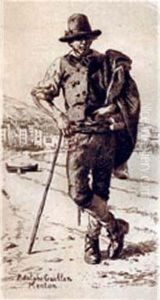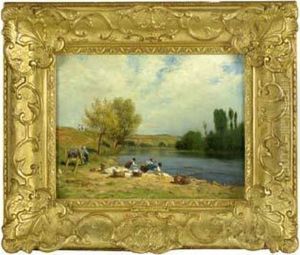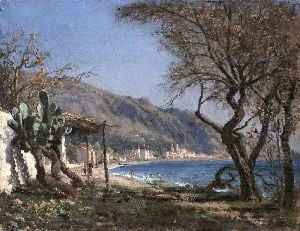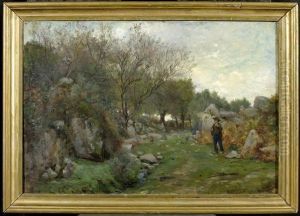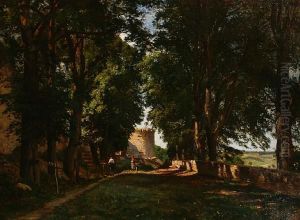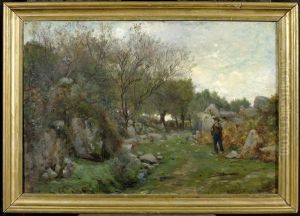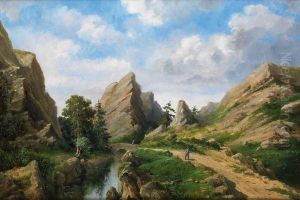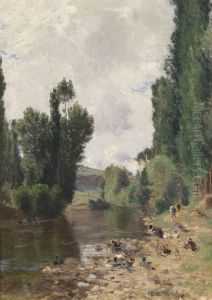Adolphe Guillon Paintings
Adolphe Guillon was a French artist and painter, born in 1839 and passing in 1892, whose life and career encapsulated the rich tapestry of 19th-century French art. His work, primarily rooted in the academic tradition, navigated the transitions and turmoils of French art during a period marked by revolutionary changes in aesthetics, technology, and society. Despite not reaching the iconic status of some of his contemporaries, Guillon's contributions to French art during his relatively short life were notable for their depth and sensitivity.
Guillon's artistic journey was deeply influenced by the broader movements of his time, including Romanticism, which was waning as he came of age, and Realism, which began to dominate the French art scene in the mid-19th century. He was educated in the prestigious École des Beaux-Arts in Paris, the crucible for many of France's most celebrated artists. Here, he was immersed in the rigorous training of drawing and painting, honing his skills in depicting the human form and landscapes with precision and emotion. His teachers, who were prominent figures in the French academic art world, played a significant role in shaping his early career and artistic outlook.
Throughout his career, Guillon exhibited his works at the Paris Salon, the official art exhibition of the Académie des Beaux-Arts in Paris. His submissions to the Salon were met with varying degrees of success, which was typical for artists of his time, as the Salon was known for its conservative tastes and often sparked controversy with the avant-garde movements. Despite the challenges, Guillon managed to gain recognition and acclaim for his work, which often explored themes of beauty, nature, and the human condition, reflecting the broader preoccupations of French society during the Second Empire and early Third Republic.
Guillon's artistic output was diverse, ranging from portraits and historical paintings to landscapes and genre scenes. His approach to these subjects combined a meticulous attention to detail with a nuanced sense of composition and color, attributes that were highly valued in the academic tradition. However, like many artists of his era, Guillon's work was increasingly overshadowed by the rise of Impressionism and Post-Impressionism, movements that radically broke with the conventions of academic art and introduced a new era of modern art.
Despite his relative obscurity in the annals of art history, Adolphe Guillon's contributions to 19th-century French art are representative of the complexities and transitions of this period. His works, though not as widely known or celebrated as those of his more famous contemporaries, offer valuable insights into the evolving landscape of French art and society during a time of significant change. Guillon's legacy, while modest, underscores the importance of recognizing the diverse array of talents and perspectives that have shaped the rich tapestry of art history.
